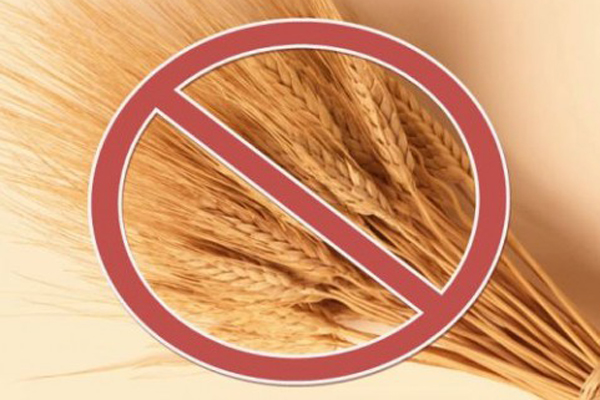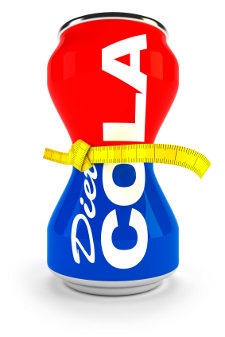Source:
Drexel University
Summary:
A popular non-nutritive sweetener may be an
effective and human-safe insecticide, researchers have discovered through a
study that began as a sixth-grade science fair project. Erythritol, the main
component of the sweetener Truvia, was toxic to fruit flies in a dose-dependent
manner in the study. Flies consumed erythritol when sugar was available and
even seemed to prefer it. No other sweeteners tested had these toxic effects.
In a Drexel University study, flies raised on food
laced with erythritol lived for only 5.8 days on average, compared to 38.6 to
50.6 days for flies raised on control and experimental foods without the
sweetener. The research was inspired by a scientist's son's sixth-grade science
fair project.
Credit: Baudier et al., Drexel University
[Click to enlarge image]
In a study that began as a sixth-grade science fair
project, researchers at Drexel University have found that a popular
non-nutritive sweetener, erythritol, may be an effective and human-safe
insecticide.
Erythritol, the main component of the sweetener
Truvia®, was toxic to Drosophila melanogaster fruit flies in a dose-dependent
manner in the Drexel team's study, published in PLOS ONE. The flies consumed
erythritol when sugar was available and even seemed to prefer it. No other
sweeteners tested had these toxic effects.
Based on this discovery, Drexel and the researchers
are pursuing a patent on erythritol as an insecticide and are continuing to
study its effectiveness.
"I feel like this is the simplest, most
straightforward work I've ever done, but it's potentially the most important
thing I've ever worked on," said Sean O'Donnell, PhD, a professor of
biology and biodiversity, earth and environmental science in Drexel's College
of Arts and Sciences, who was a senior author of the paper.
Erythritol is a naturally occurring sugar alcohol
that is present in small amounts in many fruits. It has been tested in humans
at high doses and found safe to consume; it has been designated as a generally
recognized safe food additive by the U.S. Food and Drug Administration since
2001 and is also approved as a food additive in many other countries.
And the new evidence that it is toxic to flies,
which are drawn to its sweet flavor even when other foods are available, makes
it a killer combination. It is particularly promising because it is safe for
human consumption, unlike other pesticides that have caused tragic accidental
poisonings such as one that killed 23 Indian school children last year.
This line of research would not have started without
the curiosity of one of the paper's co-authors, Simon D. Kaschock-Marenda, who
is now in the ninth grade. Three years ago, Kaschock-Marenda questioned why
both of his parents had stopped eating white sugar when trying to eat
healthier.
"He asked if he could test the effects of
different sugars and sugar substitutes on fly health and longevity for his
science fair, and I said, 'Sure!" recalled Daniel Marenda, PhD, Simon's
father and an assistant professor of biology in Drexel's College of Arts and
Sciences -- and now co-senior author of the study. Father and son proceeded to
buy supplies at their local supermarket -- as many types of sugar and sugar
substitutes as they could find. Marenda's lab supplied "baby" flies
and growth medium for his son to raise flies in each of the different types of
sweeteners at home, in preparation for the science fair at the Julia R.
Masterman School in Philadelphia.
"After six days of testing these flies in our
house, he came back to me and said, 'Dad, all the flies in the Truvia® vials
are dead...'" Marenda said. "To which I responded, 'OK...we must have
screwed up somehow. Let's repeat the experiment!'"
Under more rigorous testing conditions in the lab,
they replicated their result and knew they were onto something -- and could use
a hand. "I only use insects to study the brain, so I needed someone who
knew something about insects," said Marenda. So he brought the find down
the hall to O'Donnell, whose background in entomology suited him to the task.
Working together, the team further pursued the
question of how fruit flies responded to sweeteners -- testing flies grown
feeding on each of multiple non-nutritive sweeteners as well as sucrose (table
sugar) and corn syrup.
Flies raised on food containing Truvia® lived for
only 5.8 days on average, compared to 38.6 to 50.6 days for flies raised on
control and experimental foods without Truvia®. Flies raised on food containing
Truvia® also showed noticeable motor impairments prior to their deaths.
"Indeed what we found is that the main
component of Truvia®, the sugar erythritol, appears to have pretty potent
insecticidal activity in our flies," Marenda said.
They found that the toxic effect did not come from
stevia plant extract, which is present in both Truvia® and the non-nutritive
sweetener PureVia®. PureVia® was included in their experiments and had no toxic
effect on the flies.
"We are not going to see the planet sprayed
with erythritol and the chances for widespread crop application are slim,"
O'Donnell said. "But on a small scale, in places where insects will come
to a bait, consume it and die, this could be huge."
The scientists haven't yet confirmed which insects
erythritol might kill, other than fruit flies, or how its toxic effects take
hold.
The compound is even naturally produced in some
insects, which use it as anti-freeze to protect their bodies against cold
conditions -- but that may not mean much, as their experiments bear out that
the dose makes the poison. The researchers plan to conduct further experiments
on other insects such as termites, cockroaches, bed bugs and ants. They will
also test erythritol's toxicity as it moves up the food chain by experimenting
on praying mantids, which eat fruit flies.
Until further research helps refine the safest and
most effective uses of erythritol for insect pest control outside of the lab,
can a supermarket dose of Truvia® help get rid of fruit fly infestations in the
kitchen? The scientists aren't sure. That might be an experiment to try at
home, or for the next science fair.






